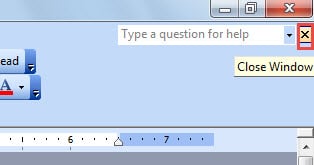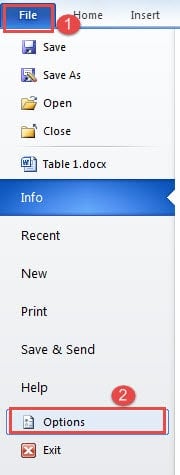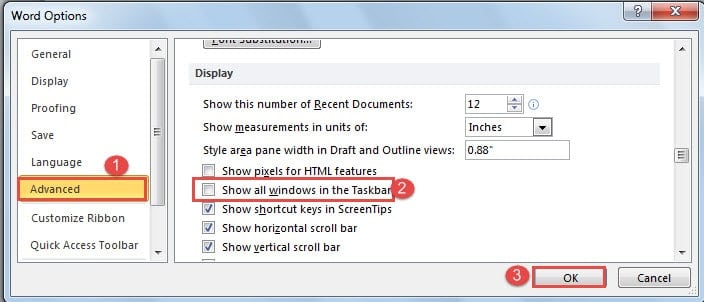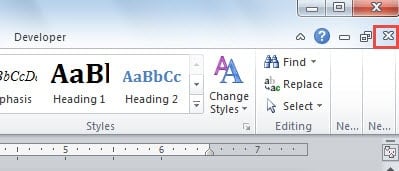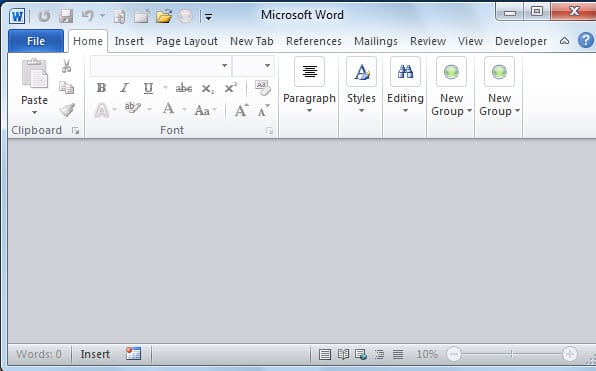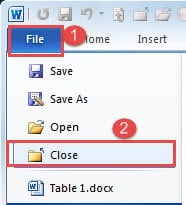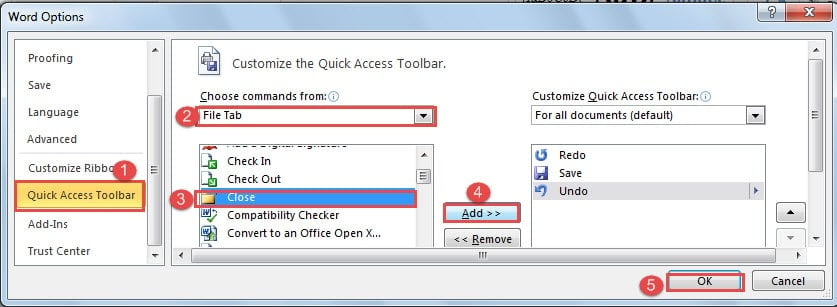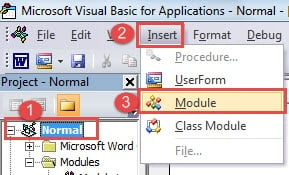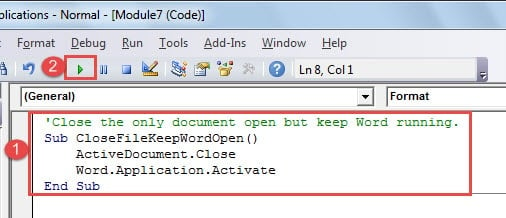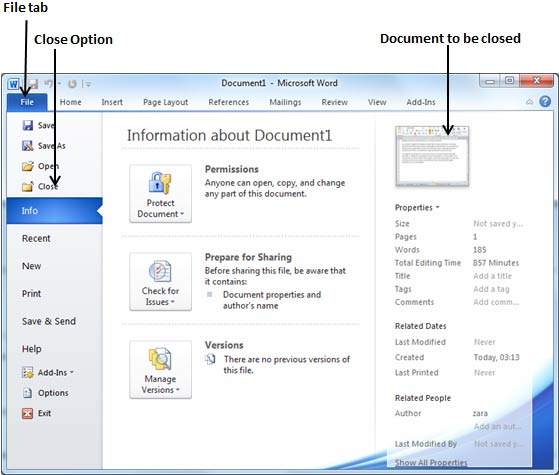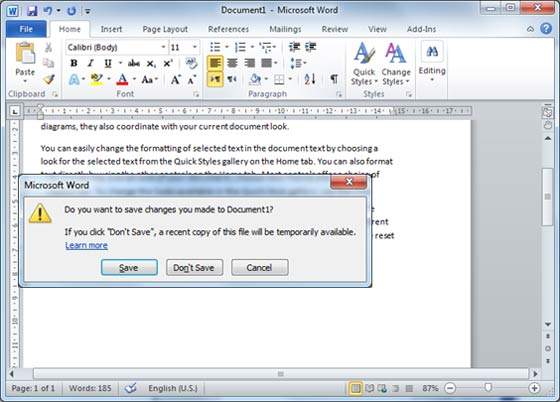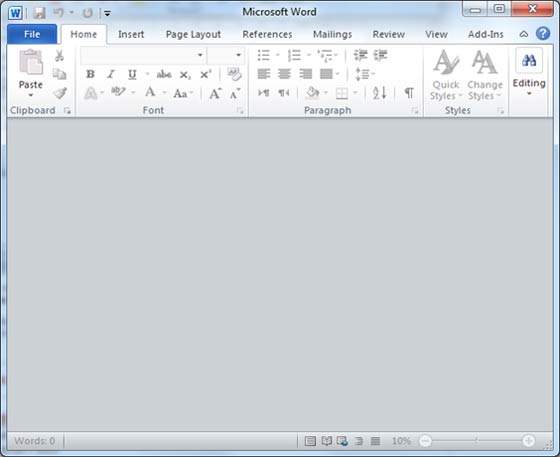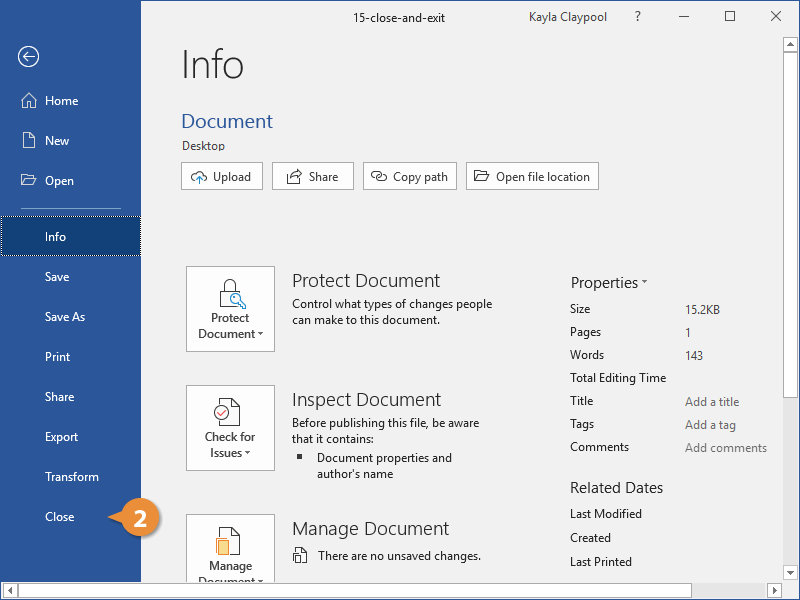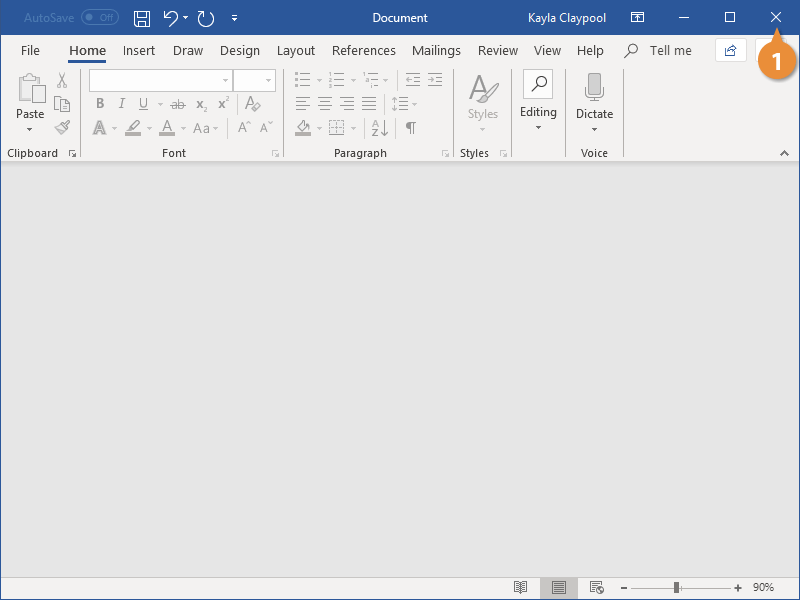|
Ципихович Эндрю 1508 / 478 / 56 Регистрация: 10.04.2009 Сообщений: 8,008 |
||||||||||||
|
1 |
||||||||||||
|
03.04.2011, 15:51. Показов 27669. Ответов 14 Метки нет (Все метки)
Close и Save документа Word, не могу в них врубиться, посмотрите пжл, три
Подскажите, мне надо условие составить
тогда сохранить без диалога «Сохранить документ» Добавлено через 17 часов 15 минут
Но проблема в синтаксе, поправьте пжл
1 |
|
Заблокирован |
|
|
03.04.2011, 16:20 |
2 |
|
Help — Справка Microsoft Visual Basic — Microsoft Word Visual Basic Reference — Methods — C — Close Method — Close Method as it applies to the Document and Documents objects.
0 |
|
1508 / 478 / 56 Регистрация: 10.04.2009 Сообщений: 8,008 |
|
|
03.04.2011, 16:23 [ТС] |
3 |
|
читал раз 100, говорю не могу врубиться ‘Doc.Close (SaveChanges, OriginalFormat, RouteDocument) Подскажите пожалуйста с примерм
0 |
|
Заблокирован |
|
|
03.04.2011, 16:25 |
4 |
|
Ципихович Эндрю,
0 |
|
Mawrat 13094 / 5875 / 1706 Регистрация: 19.09.2009 Сообщений: 8,808 |
||||
|
03.04.2011, 16:28 |
5 |
|||
|
Например, такой способ можно применить:
—
1 |
|
1508 / 478 / 56 Регистрация: 10.04.2009 Сообщений: 8,008 |
|
|
03.04.2011, 16:43 [ТС] |
6 |
|
Mawrat Ваш скрипт выполняет, получаем ошибку Ошибка команды Добавлено через 4 минуты
Если в документе есть изменения, тогда Решать надо строго: IF ActiveDocument.Undo = True THEN
0 |
|
Mawrat 13094 / 5875 / 1706 Регистрация: 19.09.2009 Сообщений: 8,808 |
||||
|
03.04.2011, 16:45 |
7 |
|||
|
Я проверял — у меня работает.
0 |
|
1508 / 478 / 56 Регистрация: 10.04.2009 Сообщений: 8,008 |
|
|
03.04.2011, 16:50 [ТС] |
8 |
|
если пользователь своими руками ничего не изменял в документе это то Вы наверное выполняете, но есть но:
0 |
|
Mawrat 13094 / 5875 / 1706 Регистрация: 19.09.2009 Сообщений: 8,808 |
||||||||
|
03.04.2011, 17:00 |
9 |
|||||||
|
В общем, тут надо рассмотреть вопрос о том, в каких случаях надо сохранять документ в файл. И требуется ли делать отмену изменений в документе.
2. Если надо сначала откатить все изменения, которые были выполнены над содержимым документа, тогда так:
—
0 |
|
1508 / 478 / 56 Регистрация: 10.04.2009 Сообщений: 8,008 |
|
|
03.04.2011, 17:17 [ТС] |
10 |
|
в предыдущем посте скрипт 1 Добавлено через 7 минут
0 |
|
13094 / 5875 / 1706 Регистрация: 19.09.2009 Сообщений: 8,808 |
|
|
03.04.2011, 17:22 |
11 |
|
Наверное лучше в начале исследуемого кода поставить точку останова и прогнать его по шагам. Такое ощущение, что ошибка происходит где-то в другом месте. Потому что выше представленные процедуры в чистом виде нормально отрабатывают.
0 |
|
1508 / 478 / 56 Регистрация: 10.04.2009 Сообщений: 8,008 |
|
|
03.04.2011, 17:27 [ТС] |
12 |
|
ActiveDocument.Close А что там останавливаться, всего 5-6 строк, на указанной строке форма: Ошибка команды
0 |
|
13094 / 5875 / 1706 Регистрация: 19.09.2009 Сообщений: 8,808 |
|
|
03.04.2011, 17:39 |
13 |
|
А на какой строке ошибка команды?
0 |
|
Ципихович Эндрю 1508 / 478 / 56 Регистрация: 10.04.2009 Сообщений: 8,008 |
||||
|
03.04.2011, 17:54 [ТС] |
14 |
|||
|
на этой
ActiveDocument.Close Добавлено через 2 минуты 170 Глава 7. В мире объектов MS Office делаю:
Получаю Ошибка команды и запрос на сохранение, а мне не нужно ни того ни другого
0 |
|
Ципихович Эндрю 1508 / 478 / 56 Регистрация: 10.04.2009 Сообщений: 8,008 |
||||
|
05.04.2011, 20:32 [ТС] |
15 |
|||
|
по большому счёту эта строка:
мне как бальзам на душу за исключением того, что если бы не сохранялся шаблон с текущим временем
0 |
In this article, we intend to introduce you 4 quick and effectual ways to keep Word program open while closing the only active document.
Normally, to concentrate on a task, we tend to open only one document in Word. However, after editing or revision, there is the matter of closing the document while keeping the program running. To be precise, this is an issue that users of Word 2010 may run into, for in Word 2003, there is the “Close Window” button on the upper left enabling you to close the document only.
Therefore, the content below involves 4 methods for you to choose.
Method 1: Reveal the “Close Window” Button
As mentioned above, in Word 2010, there is no “Close Window” button for a single document. Nevertheless, we can make it appear.
- First off, click “File” tab.
- Then click “Options” to trigger the “Word Options” dialog box.
- Next click “Advanced”.
- Continue to scroll down to the “Display” and uncheck the “Show all windows in the Taskbar” box.
- Lastly, click “OK” to save the change.
Now you can notice the “Close Window” button is available, such as below:
Here is the effect:
Method 2: Close the File instead of Word
- Firstly, click “File” tab too.
- Next click “Close”.
Or you can choose to add the “Close” command to “Quick Access Toolbar” for quick use.
- Go to the “Word Options” dialog box taking the steps in method 1.
- Then click “Quick Access Toolbar” this time.
- Next choose “File Tab” for the category.
- Find and select “Close” command.
- Next, click “Add” button.
- Finally, click “OK”.
Method 3: Use Keyboard Shortcuts
Certainly, in case you prefer using keyboard shortcuts to clicks, you can press “Ctrl+ W” or “Ctrl+ F4”. Either of it can close only the document.
Method 4: Run a Macro
- To start with, click “Developer” tab then the “Visual Basic” to open the VBA editor.
- Next click “Normal” and “Insert”.
- Choose “Module” then.
- Double click on the new module to display the editing area.
- Then paste the bellowing codes there:
'Close the only document open but keep Word running. Sub CloseFileKeepWordOpen() ActiveDocument.Close Word.Application.Activate End Sub
- Ultimately, hit “Run” button.
It’s suggested to assign a button or keyboard to the macro for easy use. For detailed information, you can look up this article: How to Remove the Formatting of Pasted Texts with Macro and VBA in Your Word
Tool to Fix Damaged Word Document
It’s known to all that file loss can wipe out everything or something critical at least. I assume what comes to top of mind after a file loss is the way to piece data back to life. Then the best way is to gain a Word data damage fix product.
Author Introduction:
Vera Chen is a data recovery expert in DataNumen, Inc., which is the world leader in data recovery technologies, including corrupt xls data recovery tool and pdf repair software products. For more information visit www.datanumen.com
MS Word or Microsoft Word is a software used to create documents such as reports, PDFs, pictured-document, assignments, etc. Microsoft provides features like Adding Images, Adding Visual effects, adding charts and graphs, etc. to a word file.
Closing a Document
Closing of a document after the desired work to it is done or there is a need for a break in between completing the content of the file, is a very important task, as it helps to prevent the undesired changes to occur to the content. Closing a document doesn’t necessarily mean that there is a need to close the entire MS Word, one can easily close a specific file that is currently open in the MS Word and then continue working with another file. There are multiple methods to close a document/file in MS Word.
Method 1: Using the File Menu
MS Word provides a specific option to close the Word Document after the work to it is done. Following are the steps to do the same:
Step 1: Click on the File Menu Tab.
Step 2: Click on the Close button provided in the options under File Menu.
Step 3: If the file is not saved, a pop-up will arise asking you to save the file. You can choose either to Save the file and perform the save operation or if there is no need to save the File, choose the Don’t Save button.
Step 4: In case, the Close button is pressed by mistake, MS Word gives you a second option to cancel the close operation.
Note: These options provided in the pop-up menu will only arise for the Unsaved Files. Saved files will close directly.
Method 2: Using the Window Close button
If you do not want to use the File Menu tab, then MS Word document can also be closed by the Close button provided in the File Window.
Step 1: Click on the ‘X’ button provided in the Top-right corner of the File Window.
Step 2: If the file is not saved, then a pop-up will arise to either Save the file or Don’t Save and Close the file as it is.
Step 3: If the ‘X‘ button is pressed by mistake, then the Cancel button can be used from the pop-up to avoid the file from getting closed.
Method 3: Using the Shortcut Keys
If you don’t want to use the mouse and want to close the file, then use the shortcut keys that are provided by MS Word to close a file.
Step 1: Press the ‘CTRL + F4’ keys simultaneously to close the Word File.
Step 2: If the File is an existing file and the changes are unsaved, then you can press ‘CTRL + S’ before performing Step 1.
The answer that you are looking for is Microsoft Word’s FileCloseOrExist command.
It does exactly what you want. If you have 2 documents open and you execute the FileCloseOrExit command, then only the active document closes. When you execute the FileCloseOrExit command a second time now when only 1 document is open, it will close the last document and then terminate Microsoft Word.
Whenever I install Microsoft Word on a new computer, one of the first things I do is change the hotkey, Control+W from FileClose to FileCloseOrExit. To be honest, I don’t know why they even have FileClose. FileCloseOrExist is the same thing but adds terminating Microsoft Word with the last document. It’s much better.
To change the Control+W hotkey to this command, you need to:
- Select File which is the first menu selection located at the top left.
- Select Options that is the last selection in the File menu.
- The Word Options window appears with a list on the left. Select Customize Ribbon that is located 4th from the bottom.
- 2 lists will appear in the window. Click Customize that is at the bottom of the left list. It’s immediately right of the text that says, «Keyboard shortcuts:».
- Under Categories, scroll all the way to the bottom. Click «All Commands» and the Command list to the right will show all possible commands. Scroll down the alphabetized list to FileCloseOrExit.
- Input Control+W as the hotkey. Click the Assign button at the bottom left.
There you have it. Now, every time you press Control+W in Microsoft Word, the program will automatically exit the program when you close the last document instead of leaving an ugly blank Word program.
I have been trying a workaround for this, for quite a long time, but haven’t found one yet.
On calling Documents.Close(), Word, which was opened with visible = false, becomes visible.
This is my close statement (document is already saved so no need to save again):
WordApp.Documents.Close(Word.WdSaveOptions.wdDoNotSaveChanges,
Word.WdOriginalFormat.wdOriginalDocumentFormat);
AYK
3,3121 gold badge17 silver badges30 bronze badges
asked Apr 15, 2012 at 19:20
You could just call WordApp.Quit().
Office apps still follow the MDI approach: You run 1 App and in that app you can open 1 or more documents.
It’s easy to lose track of that App in the background as we usually only open one document. But there are two levels of Close here.
answered Apr 15, 2012 at 19:57
H HH H
260k30 gold badges327 silver badges511 bronze badges
You could also explicitly set WordApp.Visible = false immediately after the operation; this might cause a brief flash, but should set the application back to invisible.
To avoid the brief flash of visibility, sometimes using the WordApp.ScreenUpdating property as well can help. Set it to false before attempting the Documents.Close() call, then reset to true after that’s complete.
answered May 8, 2012 at 19:32
The accepted solution (calling WordApp.Quit()) was not a viable option for me. I tried setting
WordApp.ScreenUpdating = false
immediately prior to calling Documents.Close() and that did not help either — I still got the screen flash.
I then tried setting
WordApp.ActiveWindow.Visible = false
immediately after opening the document. That did not make any difference either.
Finally I tried setting
WordApp.ActiveWindow.Top = -5000
(so as to move the window display well out of the visible desktop area in my monitor setup — if you have an unusual (giant!) monitor setup that might not work for you, adjust accordingly) and that solved the problem — no more flashing.
An annoying hack, but worked in my case.
answered May 20, 2016 at 12:01
Rob3CRob3C
4567 silver badges16 bronze badges
None of above comments work for me. I tried with:
WordApp.ActiveWindow.Top = -5000
But my program terminates with «active window is maximized» exception.
I ultimately resolved it by following call before invoke Document.Close():
m_word.ActiveWindow.WindowState = WdWindowState.wdWindowStateMinimize;
It’s a perfect solution for me. Hope it would work for you as well.
answered Oct 12, 2016 at 15:40
Using the ActiveDocument.Close() method will not show the window.
WordApp.ActiveDocument.Close(saveChanges: false);
answered Mar 24, 2018 at 0:50
R. StackUserR. StackUser
2,0054 gold badges16 silver badges24 bronze badges
None of the above solutions worked for me.
I finally realized that for me it was the AutoOpen macro that was the problem. Every time a Word document was opened, AutoOpen would make the ActiveDocument.Visible = False, run some changes (like opening the style pane), then turn ActiveDocument.Visible = True at the end.
This final line in AutoOpen is what caused every document to briefly flash on the screen. Removing both ActiveDocument.Visible = False and ActiveDocument.Visible = True from the AutoOpen macro solved the issue.
answered May 11, 2021 at 23:58
Содержание
- Метод Application.Quit (Word)
- Синтаксис
- Параметры
- Пример
- См. также
- Поддержка и обратная связь
- Метод Document.Close (Word)
- Синтаксис
- Параметры
- Пример
- См. также
- Поддержка и обратная связь
- Application.Quit method (Word)
- Syntax
- Parameters
- Example
- See also
- Support and feedback
- Работа с объектами документа
- Создание нового документа
- Открытие документа
- Сохранение существующего документа
- Сохранение нового документа
- Закрытие документов
- Активация документа
- Определение того, открыт ли документ
- Ссылка на активный документ
- Поддержка и обратная связь
- Document.Close method (Word)
- Syntax
- Parameters
- Example
- See also
- Support and feedback
Метод Application.Quit (Word)
Завершает работу с Microsoft Word и при необходимости сохраняет или маршрутизирует открытые документы.
Синтаксис
expression. Выход (SaveChanges, OriginalFormat, RouteDocument)
выражение (обязательно). Переменная, представляющая объект Application .
Параметры
| Имя | Обязательный или необязательный | Тип данных | Описание |
|---|---|---|---|
| Savechanges | Необязательный | Variant | Указывает, сохраняет ли Word измененные документы перед закрытием. Может быть одной из констант WdSaveOptions . |
| OriginalFormat | Необязательный | Variant | Указывает способ, которым Word сохраняет документы, исходный формат которых не был форматом документа Word. Может быть одной из констант WdOriginalFormat . |
| RouteDocument | Необязательный | Variant | Значение true для маршрутизации документа следующему получателю. Если документ не имеет прикрепленного скольжения маршрутизации, этот аргумент игнорируется. |
Пример
В этом примере приложение Word закрывается и пользователю предлагается сохранить каждый документ, который изменился с момента последнего сохранения.
В этом примере пользователю предлагается сохранить все документы. Если пользователь нажимает кнопку Да, все документы сохраняются в формате Word до закрытия Word.
См. также
Поддержка и обратная связь
Есть вопросы или отзывы, касающиеся Office VBA или этой статьи? Руководство по другим способам получения поддержки и отправки отзывов см. в статье Поддержка Office VBA и обратная связь.
Источник
Метод Document.Close (Word)
Закрывает указанный документ.
Синтаксис
expression. Close (SaveChanges, OriginalFormat, RouteDocument)
выражение (обязательно). Переменная, представляющая объект Document .
Параметры
| Имя | Обязательный или необязательный | Тип данных | Описание |
|---|---|---|---|
| Savechanges | Необязательный | Variant | Указывает действие сохранения для документа. Может быть одной из следующих констант WdSaveOptions : wdDoNotSaveChanges, wdPromptToSaveChanges или wdSaveChanges. |
| OriginalFormat | Необязательный | Variant | Задает формат сохранения документа. Может быть одной из следующих констант WdOriginalFormat : wdOriginalDocumentFormat, wdPromptUser или wdWordDocument. |
| RouteDocument | Необязательный | Variant | Значение true для маршрутизации документа следующему получателю. Если документ не имеет прикрепленного скольжения маршрутизации, этот аргумент игнорируется. |
Пример
В этом примере пользователю предлагается сохранить активный документ перед закрытием. Если пользователь нажимает кнопку Отмена, возникает ошибка 4198 (сбой команды) и отображается сообщение.
См. также
Поддержка и обратная связь
Есть вопросы или отзывы, касающиеся Office VBA или этой статьи? Руководство по другим способам получения поддержки и отправки отзывов см. в статье Поддержка Office VBA и обратная связь.
Источник
Application.Quit method (Word)
Quits Microsoft Word and optionally saves or routes the open documents.
Syntax
expression.Quit (SaveChanges, OriginalFormat, RouteDocument)
expression Required. A variable that represents an Application object.
Parameters
| Name | Required/Optional | Data type | Description |
|---|---|---|---|
| SaveChanges | Optional | Variant | Specifies whether Word saves changed documents before closing. Can be one of the WdSaveOptions constants. |
| OriginalFormat | Optional | Variant | Specifies the way Word saves documents whose original format was not Word Document format. Can be one of the WdOriginalFormat constants. |
| RouteDocument | Optional | Variant | True to route the document to the next recipient. If the document does not have a routing slip attached, this argument is ignored. |
Example
This example closes Word and prompts the user to save each document that has changed since it was last saved.
This example prompts the user to save all documents. If the user clicks Yes, all documents are saved in the Word format before Word closes.
See also
Support and feedback
Have questions or feedback about Office VBA or this documentation? Please see Office VBA support and feedback for guidance about the ways you can receive support and provide feedback.
Источник
Работа с объектами документа
В Visual Basic методы изменения файлов являются методами объекта Document или коллекции Documents . В этом разделе приведены примеры Visual Basic, связанные с задачами, определенными в следующих разделах.
Создание нового документа
Коллекция Documents включает все открытые документы. Чтобы создать документ, используйте метод Add , чтобы добавить объект Document в коллекцию Documents . Следующая инструкция создает документ.
Лучший способ создания документа — назначить возвращаемое значение переменной объекта. Метод Add возвращает объект Document , который ссылается на новый документ. В следующем примере объект Document , возвращенный методом Add , назначается переменной объекта . Затем задаются несколько свойств и методов объекта Document . Вы можете легко управлять новым документом с помощью объектной переменной.
Открытие документа
Чтобы открыть существующий документ, используйте метод Open с коллекцией Documents . Следующая инструкция открывает документ с именем Sample.doc, расположенный в папке MyFolder.
Сохранение существующего документа
Чтобы сохранить один документ, используйте метод Save с объектом Document . Следующая инструкция сохраняет документ с именем Sales.doc.
Вы можете сохранить все открытые документы, применив метод Save к коллекции Documents . Следующая инструкция сохраняет все открытые документы.
Сохранение нового документа
Чтобы сохранить один документ, используйте метод SaveAs2 с объектом Document . Следующая инструкция сохраняет активный документ как «Temp.doc» в текущей папке.
Аргумент FileName может включать только имя файла или полный путь (например, «C:DocumentsTemporary File.doc»).
Закрытие документов
Чтобы закрыть один документ, используйте метод Close с объектом Document . Следующая инструкция закрывает и сохраняет документ с именем Sales.doc.
Вы можете закрыть все открытые документы, применив метод Close коллекции Documents . Следующая инструкция закрывает все документы без сохранения изменений.
В следующем примере пользователю предлагается сохранить каждый документ перед закрытием документа.
Активация документа
Чтобы изменить активный документ, используйте метод Activate с объектом Document . Следующая инструкция активирует открытый документ с именем Sales.doc.
Определение того, открыт ли документ
Чтобы определить, открыт ли документ, можно перечислить коллекцию Documents с помощью параметра For Each. Следующая инструкция. В следующем примере документ с именем Sample.doc активируется, если документ открыт, или открывается Sample.doc, если он в настоящее время не открыт.
Ссылка на активный документ
Вместо ссылки на документ по имени или по номеру индекса, например, Documents(«Sales.doc») свойство ActiveDocument возвращает объект Document , ссылающийся на активный документ (документ с фокусом). В следующем примере отображается имя активного документа или, если документы не открыты, отображается сообщение.
Поддержка и обратная связь
Есть вопросы или отзывы, касающиеся Office VBA или этой статьи? Руководство по другим способам получения поддержки и отправки отзывов см. в статье Поддержка Office VBA и обратная связь.
Источник
Document.Close method (Word)
Closes the specified document.
Syntax
expression.Close (SaveChanges, OriginalFormat, RouteDocument)
expression Required. A variable that represents a Document object.
Parameters
| Name | Required/Optional | Data type | Description |
|---|---|---|---|
| SaveChanges | Optional | Variant | Specifies the save action for the document. Can be one of the following WdSaveOptions constants: wdDoNotSaveChanges, wdPromptToSaveChanges, or wdSaveChanges. |
| OriginalFormat | Optional | Variant | Specifies the save format for the document. Can be one of the following WdOriginalFormat constants: wdOriginalDocumentFormat, wdPromptUser, or wdWordDocument. |
| RouteDocument | Optional | Variant | True to route the document to the next recipient. If the document does not have a routing slip attached, this argument is ignored. |
Example
This example prompts the user to save the active document before closing it. If the user clicks Cancel, error 4198 (command failed) is trapped and a message is displayed.
See also
Support and feedback
Have questions or feedback about Office VBA or this documentation? Please see Office VBA support and feedback for guidance about the ways you can receive support and provide feedback.
Источник
In this chapter, we will understand how to close a document in Word 2010. When you finish working with a document, you will proceed to close the document. Closing a document removes it from your computer screen and if you had other documents open, Word displays the last document you used otherwise, you see a blank Word window. Here are simple steps to close an opened document −
Step 1 − Click the File tab and select the Close option.
Step 2 − When you select the Close option and if the document is not saved before closing, it will display the following Warning box asking whether the document should be saved or not.
Step 3 − To save the changes, click Save, otherwise click Don’t Save. To go back to the document, click Cancel. This will close the document and if you have other documents open, Word displays the last document you used, otherwise, you see a blank Word window as shown below −
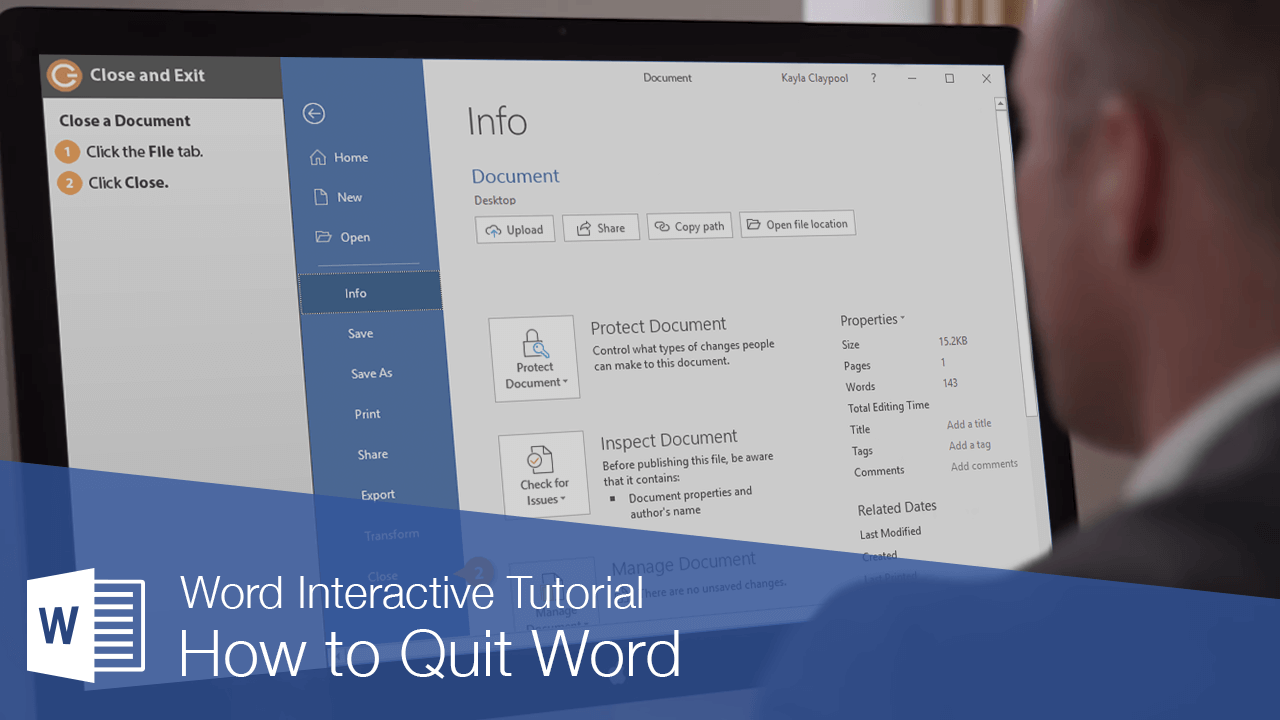
When you’re done working with a file, it’s a good idea to close it so you don’t bog down your computer with unused programs.
Close a Document
Each document window must be closed individually. If you only have one file open, you can close it from the File menu and keep Word running.
- Click the File tab.
- Click the Close.
The file is closed, but Word is still running. You can still browse for a file to open, create a new document from a template, and access Word’s options.
If you have multiple Word documents open, clicking the Close button on the title bar will close each document individually.
If you have not saved the document since making changes, a dialog box will appear asking if you want to save the changes to the document. Click Save if you wish to save your changes, click Don’t Save Save if you do not want to save your changes, and click Cancel if you do not want to close the document.
Close Word
If you only have one Word document open, closing the document window will also quit Word entirely.
- Click the Close button.
Word quits as the window closes.
FREE Quick Reference
Click to Download
Free to distribute with our compliments; we hope you will consider our paid training.




